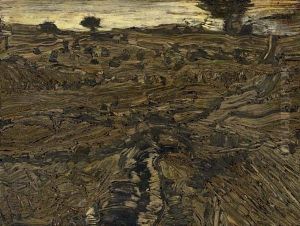Leopold Layer Paintings
Leopold Layer was a prominent Slovenian painter and art restorer, born in the year 1752 in Kranj, which was then part of the Habsburg Monarchy and is now in Slovenia. Layer's life and career were profoundly shaped by the socio-political and cultural currents of his time, making him a significant figure in the Slovenian art scene of the late 18th and early 19th centuries. His contributions to art were multifaceted, including religious compositions, portraits, and restorations, showcasing a versatile mastery of the visual arts that resonated with the Baroque and early Neoclassical styles prevalent in Central Europe during his lifetime.
Layer's early life was marked by his dedication to mastering the art of painting, and he is believed to have received his initial training from local artists in Kranj before further honing his skills in Vienna, a major cultural and artistic center of the period. His work was deeply influenced by the Baroque tradition, yet he gradually incorporated Neoclassical elements, reflecting the evolving artistic tastes of his era. Layer was not just a painter but also a skilled restorer, working on the conservation of numerous artworks and frescoes in churches across Slovenia, thereby playing a crucial role in the preservation of the region's cultural heritage.
Throughout his career, Leopold Layer became best known for his religious paintings, which were commissioned by various churches in Slovenia. His works are characterized by their expressive figures, vibrant use of color, and dynamic compositions, blending spiritual themes with the artistic trends of his time. Among his most notable works are the altarpieces and frescoes in the churches of Škofja Loka, Kranj, and the surrounding areas, which remain as testaments to his artistic legacy.
Beyond his artistic achievements, Layer's life was also marked by personal and political turmoil. He was involved in the Napoleonic Wars, during which he was accused of espionage and faced severe penalties, including the confiscation of his property. Despite these challenges, Layer continued to work until his death in 1828 in Kranj, leaving behind a rich body of work that continues to be celebrated for its contribution to Slovenian cultural and artistic heritage. Layer's legacy is not only preserved in his paintings but also in the stories and legends about his life and work, which have cemented his status as a pivotal figure in the history of Slovenian art.
